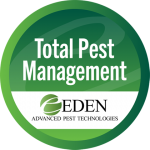When it comes to pests in grocery stores, certain culprits tend to make frequent appearances due to their affinity for food sources and conducive environments. If your grocery store has an infestation, it’s likely one of these main pests:
Cockroaches
Cockroaches are notorious for their resilience and ability to thrive in various environments, including grocery stores. These nocturnal insects can squeeze through tiny cracks and crevices, contaminating food items and spreading pathogens as they forage. Their presence can tarnish a store’s reputation and pose serious health risks to customers.
Rodents
Rats and mice are attracted to grocery stores by the abundance of food available. These rodents can gnaw through packaging, contaminate food with their droppings and urine, and transmit diseases such as salmonella and hantavirus. Their elusive nature and rapid reproduction make them challenging pests to control once they’ve infiltrated a store.
Birds
While birds may seem harmless, their presence in grocery stores can lead to hygiene issues and food contamination. Pigeons, sparrows, and other birds may enter through open doors or loading docks, roost in rafters, and leave behind droppings that can harbor harmful bacteria and pathogens.
If you have birds, it may be tempting to try and shoo them out on your own, but it’s always best to work with a trained professional—especially if there are customers in the vicinity.
Flies
Flies are attracted to the aroma of food and can quickly become a nuisance in grocery stores. Common varieties include houseflies, fruit flies, and drain flies. These pests can contaminate surfaces and food items with bacteria picked up from unsanitary breeding sites, such as garbage bins and drains.
Pantry Pests
Pantry pests encompass a variety of insects that infest stored food products. Common examples include beetles, moths, and weevils. These pests often hitch a ride into grocery stores within infested food shipments, where they can quickly spread to other products on shelves or in storage areas.
How Do Pests Get Inside Grocery Stores?
Despite the meticulous cleanliness often associated with grocery stores, they remain susceptible to pest infestations. The very nature of these establishments, with their constant foot traffic, abundant food sources, and various entry points, creates an environment ripe for unwelcome intruders. Here’s a closer look at how pests find their way into grocery stores:
- Foot Traffic: Grocery stores attract a steady stream of customers throughout the day, with people coming in and out with bags and carts. Unfortunately, this high level of human activity can inadvertently bring pests indoors. Pests such as flies, ants, and even rodents can hitch a ride on clothing, shoes, or packages, gaining access to the store unnoticed.
- Food Sources: Your store is stocked with a wide array of food items, including fresh produce, packaged goods, and bakery items. These items serve as irresistible attractions for pests seeking nourishment. From crumbs left behind on shelves to spilled grains in the bulk bins, there are ample opportunities for pests to find sustenance within the store premises.
- Entry Points: Despite efforts to seal entry points, grocery stores typically have multiple access points, including doors, windows, loading docks, and vents. Pests can exploit these openings to gain entry into the store, especially if proper preventive measures are not in place. Additionally, deliveries and shipments provide additional opportunities for pests to sneak in unnoticed.
- Environmental Factors: The climate-controlled environment within grocery stores provides optimal conditions for pests to thrive. Warm temperatures, ample moisture, and hiding spots behind shelving units or in storage areas create a hospitable habitat for pests to breed and multiply.
How to Protect Your Grocery Store From Infestations
Ensuring a pest-free environment in a grocery store requires proactive measures and consistent vigilance. Here are key steps grocery store managers can take to keep their space free from infestations:
- Implement Strict Sanitation Practices: Regularly clean and sanitize all areas of the store, paying particular attention to food preparation areas, storage spaces, and trash disposal areas. Promptly clean up spills, crumbs, and food debris to eliminate potential attractants for pests.
- Seal Entry Points: Conduct regular inspections to identify and seal any gaps, cracks, or openings that pests could use to gain entry into the store. Install door sweeps, screens on windows, and weather stripping to minimize access points.
- Store Food Properly: Store food items in sealed containers and off the floor to prevent contamination and discourage pests. Rotate stock regularly to minimize the risk of pantry pests infesting stored products.
- Maintain Outdoor Areas: Keep outdoor areas clean and free of debris to deter pests from congregating near the store. Properly manage landscaping and waste disposal to minimize attractants for rodents, birds, and other pests.
- Partner with Professional Pest Control: Enlist the services of a reputable pest control company to conduct regular inspections, implement preventive measures, and address any pest issues promptly and effectively.
Eden Advanced Pest Technologies specializes in comprehensive pest management solutions tailored to the unique needs of grocery stores. With our experienced technicians and innovative approaches, we can help safeguard your store against pests and maintain a hygienic environment for your customers and staff.
Contact us today to learn more about our services and how we can support your pest control efforts.
Back to Commercial Pest Control

